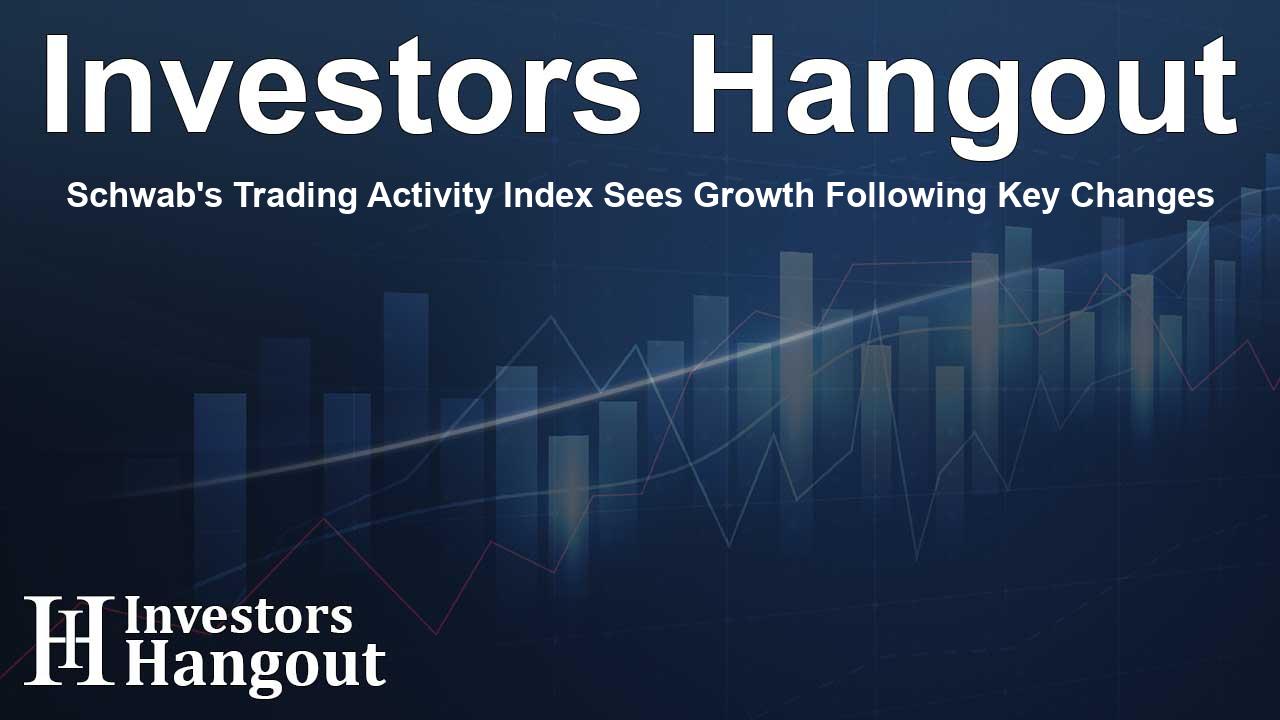Schwab's Trading Activity Index Sees Growth Following Key Changes

Understanding the Recent Changes in Schwab's Trading Index
The Schwab Trading Activity Index™ (STAX) has shown a noteworthy increase, reaching a score of 49.22 in the latest period. This marks an improvement from October's score of 48.37, indicating a subtle rise in trading activity. As a pioneering index of its kind, the STAX provides insights into retail investor behaviors by analyzing stock positions and trading patterns of millions of clientele from Charles Schwab.
Market Dynamics Influencing Investor Behavior
Throughout November, economic factors played a visible role in shaping investor sentiment. The end of the U.S. election cycle and the Federal Reserve's decision to cut interest rates led to more clients taking positions as net buyers in the equity market. Joe Mazzola, the Head Trading & Derivatives Strategist at Charles Schwab, noted that despite these retail investor dynamics, the overall dollar volume indicated net selling of equities. This reflects a complex market where clients diversified into other investment vehicles such as ETFs, mutual funds, and treasury securities.
Impact of Economic Announcements
Recent economic announcements also contributed to shifts in market activity. For instance, the Employment Situation Summary from the U.S. Bureau of Labor Statistics showed stable non-farm payrolls and an unchanged unemployment rate. Such stability perhaps reassured investors, leading to a boost in the S&P 500, which saw a substantial increase following these reports. Additionally, the Federal Open Market Committee's decision to lower the Fed Funds rate indicated a shift in the central bank's approach toward achieving full employment while addressing inflation concerns.
Analyzing Equity Movements and Volatility
Market volatility, represented by the CBOE Volatility Index® (VIX), saw a significant decline, falling by 26% during the month. This decline correlates with a sharp rise in stock prices across major indices, reaching new all-time highs. Most notable was how equities maintained their positions above historical moving averages, suggesting solid market momentum despite external pressures.
Trends in Investment Choices
Amidst these macroeconomic influences, there were clear trends in what investors chose to buy and sell. Popular stocks amongst Schwab clients included industry giants like NVIDIA Corp. and Advanced Micro Devices Inc. Conversely, notable sell-offs included major corporations like Apple Inc. and Tesla Inc., hinting at a strategic shift by investors towards more promising or less volatile investments.
Understanding STAX Methodology
The methodology behind the STAX index is intricate, involving a statistically significant sample of Schwab's funded accounts. Each month, performance metrics are derived from this data to create an accurate representation of investor behavior. This index not only reflects current market conditions but also offers a preview of potential future trends.
Final Thoughts on Current Market Conditions
As we observe market movements and investor responses, it becomes evident that both economic indicators and investor sentiment greatly influence trading behavior. The combination of an evolving economic landscape and the adaptability of investors continues to shape the dynamics of trading. Keeping track of these shifts is essential for predicting potential changes in market direction.
About Charles Schwab
At Charles Schwab, commitment to empowering investors is at the forefront. The organization strives to innovate within the financial sector and prioritize the needs and objectives of its clients. Offering a variety of investment tools and educational resources helps individuals navigate their financial journeys. For more information, individuals are encouraged to visit the firm’s official webpage.
Frequently Asked Questions
What is the Schwab Trading Activity Index (STAX)?
The STAX is an index that measures retail investor behavior by analyzing stock trading activity across Schwab’s client accounts.
How did the STAX score change from October to November?
The STAX score increased from 48.37 in October to 49.22 in November, indicating an uptick in trading activity among investors.
What economic factors influenced investor behavior in November?
Key economic factors included the outcome of the U.S. elections and the Federal Reserve's interest rate cut, which influenced clients to become net buyers in equities.
What popular stocks did Schwab clients buy during the period?
Some popular stocks included NVIDIA, Palantir Technologies, and Advanced Micro Devices, reflecting investors' interest in tech and growth sectors.
How can investors use the STAX index?
Investors can use the STAX index to gauge retail investor trends and market sentiment, helping them make informed trading decisions.
About The Author
Contact Riley Hayes privately here. Or send an email with ATTN: Riley Hayes as the subject to contact@investorshangout.com.
About Investors Hangout
Investors Hangout is a leading online stock forum for financial discussion and learning, offering a wide range of free tools and resources. It draws in traders of all levels, who exchange market knowledge, investigate trading tactics, and keep an eye on industry developments in real time. Featuring financial articles, stock message boards, quotes, charts, company profiles, and live news updates. Through cooperative learning and a wealth of informational resources, it helps users from novices creating their first portfolios to experts honing their techniques. Join Investors Hangout today: https://investorshangout.com/
The content of this article is based on factual, publicly available information and does not represent legal, financial, or investment advice. Investors Hangout does not offer financial advice, and the author is not a licensed financial advisor. Consult a qualified advisor before making any financial or investment decisions based on this article. This article should not be considered advice to purchase, sell, or hold any securities or other investments. If any of the material provided here is inaccurate, please contact us for corrections.
